Direct mail continues to achieve great results for businesses and delivers a fantastic return on investment (ROI) – if you get the details right.
In the 1960s, marketing expert Ed Mayer established the 40-40-20 rule to help marketers understand where to focus their efforts when it comes to direct mail. This rule set out three core elements to achieve success:
- 40% is the effectiveness of your mailing list – are you targeting the right audience?
- 40% depends on your offer – how compelling or valuable is it to the recipient?
- 20% comes from the creative and everything else.
But decades on in the era of digital, marketing technology has advanced, the choice of content platforms and marketing channels is vast, and buyers’ journeys have significantly evolved – so is this rule still relevant?
We believe it is. Fundamentally, reaching the right audience with the right proposition (or offer) remains key to any campaign. However, when it comes to that remaining 20% of ‘everything else’ – today there are many additional components to think about. These small details can make or break a campaign, and whilst some may appear more obvious than others, none should be overlooked.
So, what are those small details? We’ve listed our top 10 below.
An eye-catching design
You’ve heard of ‘curb appeal’? Well, make sure your campaign has ‘postbag presence’. To achieve this, your direct mail piece should have a stand-out design that catches the attention of the recipient, makes them want to open it, and hopefully act on it too.
Be creative. Mailers can be in many formats, from flyers and postcards to folded self-mailers and brochures. Explore shapes, colours, sizes, imagery, and layouts, but be sure to keep it on-brand.
A compelling headline
Again, there are plenty of options to consider here, and much of it will depend on your business and the nature of your mailer.
Using symbols and numerals instead of spelling them out (eg ‘5’ instead of ‘five’, and ‘%’ instead of ‘percent’) makes headlines quicker to scan.
Choosing words that evoke emotion, and using open questions, can also help people to quickly engage and resonate with your message. Similarly, focusing on the benefits, rather than the features of your product or offer, can also help your audience see the value of what you ask them to do.
For more inspiration, take a look at the headlines and use of copy in this brilliant article which compiles over 50 examples of campaigns.
Easy to read copy
Keep the language simple, jargon-free, concise, and get straight to the point. You want to be persuasive, but remember attention-spans are limited, so your copy should be easy to skim-read. Using bullet points, short paragraphs, and highlighting one or two important points will also help with this.
A clear call to action
Make your call to action (CTA) clear, easy, and direct so the recipient knows exactly what to do next. Having multiple CTAs may risk confusion or disengagement with the campaign. If you are promoting an offer, you can add urgency by adding a timeframe. For example, ‘Order before Tuesday…’
White space
Let the design breathe. This may seem basic, but it regularly gets forgotten! Those compelling headlines or clear CTAs will stand out more if you leave plenty of clear space around each element in your design. Overall, it makes the whole piece quicker to read and will give it far more impact.
Personalisation
Personalised mail can greatly impact the response rate of your mail. This could be something as simple as adding the recipient’s name or business, through to fully customising the message, CTA, or offer based on anything from their location to purchase history.
Tailoring the content in this way helps you to develop a connection with your audience which hopefully leads them to feeling more valued.
Work with your other channels
Direct mail and digital marketing do not have to be an either-or proposition. Integrate your direct mail with other online and offline marketing channels such as social media, your website, an event/conference schedule, or email marketing. For more advice on this – we’ve covered integrating direct mail and digital campaigns here.
Get expert help where you need it
It’s one thing to get your distribution list and mailer design in order, but it’s crucial to also get the printing and postage right to ensure your campaign lands on time, looks its best, and, importantly, stays within budget.
When it comes to print, you always get what you pay for – and brands rarely benefit from using a low-quality product. Ask for free samples from your printer so you fully understand what end product you are getting for your budget.
Using the same business for both printing and mailing will almost always save time, money, and reduce the stress of coordinating each part of the mail fulfilment process. These businesses (us included!) also know how to use your budget in the most effective way, they understand the relationship between printing specifications (eg weight and size) and mailing costs, plus, they will also be capable of finding you the best bulk pricing for postage.
Don’t forget yourself
Always send the mailer to yourself so you can see exactly what it looks like after going through the full process of printing and postage. You’ll then know exactly when it lands and get an indication of your recipients’ first impressions on opening.
Measure and learn
To optimise your direct mail campaign, you need to plan time to continuously refine and improve your strategy. Direct mail can be costly, but only if you’re unable to set realistic and trackable goals so you can keep on top of your ROI, and learn from the results you achieve.
Keep A/B testing elements such as your design, messaging, offer, and CTA. Read more about how you can do this, and how to measure the success of your campaigns here.


